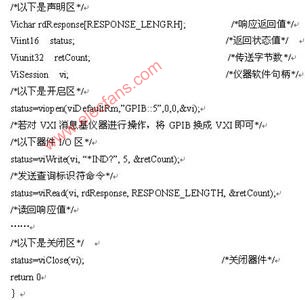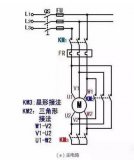2、数据排序
“数据排序”是许多实际任务执行时要完成的第一项工作,比如学生成绩评比、数据建立索引等。这个实例和数据去重类似,都是先对原始数据进行初步处理,为进一步的数据操作打好基础。下面进入这个示例。
2.1 实例描述
对输入文件中数据进行排序。输入文件中的每行内容均为一个数字,即一个数据。要求在输出中每行有两个间隔的数字,其中,第一个代表原始数据在原始数据集中的位次,第二个代表原始数据。
样例输入:
1)file1:
2
32
654
32
15
756
65223
2)file2:
5956
22
650
92
3)file3:
26
54
6
样例输出:
1 2
2 6
3 15
4 22
5 26
6 32
7 32
8 54
9 92
10 650
11 654
12 756
13 5956
14 65223
2.2 设计思路
这个实例仅仅要求对输入数据进行排序,熟悉MapReduce过程的读者会很快想到在MapReduce过程中就有排序,是否可以利用这个默认的排序,而不需要自己再实现具体的排序呢?答案是肯定的。
但是在使用之前首先需要了解它的默认排序规则。它是按照key值进行排序的,如果key为封装int的IntWritable类型,那么MapReduce按照数字大小对key排序,如果key为封装为String的Text类型,那么MapReduce按照字典顺序对字符串排序。
了解了这个细节,我们就知道应该使用封装int的IntWritable型数据结构了。也就是在map中将读入的数据转化成 IntWritable型,然后作为key值输出(value任意)。reduce拿到《key,value-list》之后,将输入的 key作为value输出,并根据value-list中元素的个数决定输出的次数。输出的key(即代码中的linenum)是一个全局变量,它统计当前key的位次。需要注意的是这个程序中没有配置Combiner,也就是在MapReduce过程中不使用Combiner。这主要是因为使用map和reduce就已经能够完成任务了。
2.3 程序代码
程序代码如下所示:
package com.hebut.mr;
import java.io.IOException;
import org.apache.hadoop.conf.Configuration;
import org.apache.hadoop.fs.Path;
import org.apache.hadoop.io.IntWritable;
import org.apache.hadoop.io.Text;
import org.apache.hadoop.mapreduce.Job;
import org.apache.hadoop.mapreduce.Mapper;
import org.apache.hadoop.mapreduce.Reducer;
import org.apache.hadoop.mapreduce.lib.input.FileInputFormat;
import org.apache.hadoop.mapreduce.lib.output.FileOutputFormat;
import org.apache.hadoop.util.GenericOptionsParser;
public class Sort {
//map将输入中的value化成IntWritable类型,作为输出的key
public static class Map extends
Mapper《Object,Text,IntWritable,IntWritable》{
private static IntWritable data=new IntWritable();
//实现map函数
public void map(Object key,Text value,Context context)
throws IOException,InterruptedException{
String line=value.toString();
data.set(Integer.parseInt(line));
context.write(data, new IntWritable(1));
}
}
//reduce将输入中的key复制到输出数据的key上,
//然后根据输入的value-list中元素的个数决定key的输出次数
//用全局linenum来代表key的位次
public static class Reduce extends
Reducer《IntWritable,IntWritable,IntWritable,IntWritable》{
private static IntWritable linenum = new IntWritable(1);
//实现reduce函数
public void reduce(IntWritable key,Iterable《IntWritable》 values,Context context)
throws IOException,InterruptedException{
for(IntWritable val:values){
context.write(linenum, key);
linenum = new IntWritable(linenum.get()+1);
}
}
}
public static void main(String[] args) throws Exception{
Configuration conf = new Configuration();
//这句话很关键
conf.set(“mapred.job.tracker”, “192.168.1.2:9001”);
String[] ioArgs=new String[]{“sort_in”,“sort_out”};
String[] otherArgs = new GenericOptionsParser(conf, ioArgs).getRemainingArgs();
if (otherArgs.length != 2) {
System.err.println(“Usage: Data Sort 《in》 《out》”);
System.exit(2);
}
Job job = new Job(conf, “Data Sort”);
job.setJarByClass(Sort.class);
//设置Map和Reduce处理类
job.setMapperClass(Map.class);
job.setReducerClass(Reduce.class);
//设置输出类型
job.setOutputKeyClass(IntWritable.class);
job.setOutputValueClass(IntWritable.class);
//设置输入和输出目录
FileInputFormat.addInputPath(job, new Path(otherArgs[0]));
FileOutputFormat.setOutputPath(job, new Path(otherArgs[1]));
System.exit(job.waitForCompletion(true) ? 0 : 1);
}
}
2.4 代码结果
1)准备测试数据
通过Eclipse下面的“DFS Locations”在“/user/hadoop”目录下创建输入文件“sort_in”文件夹(备注:“sort_out”不需要创建。)如图2.4-1所示,已经成功创建。
然后在本地建立三个txt文件,通过Eclipse上传到“/user/hadoop/sort_in”文件夹中,三个txt文件的内容如“实例描述”那三个文件一样。如图2.4-2所示,成功上传之后。
从SecureCRT远处查看“Master.Hadoop”的也能证实我们上传的三个文件。
查看两个文件的内容如图2.4-3所示:
2)查看运行结果
这时我们右击Eclipse 的“DFS Locations”中“/user/hadoop”文件夹进行刷新,这时会发现多出一个“sort_out”文件夹,且里面有3个文件,然后打开双 其“part-r-00000”文件,会在Eclipse中间把内容显示出来。如图2.4-4所示。
 电子发烧友App
电子发烧友App





























评论